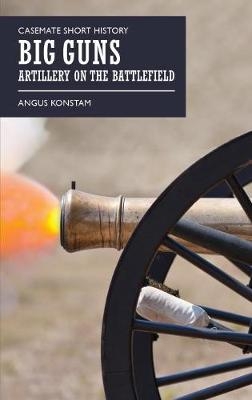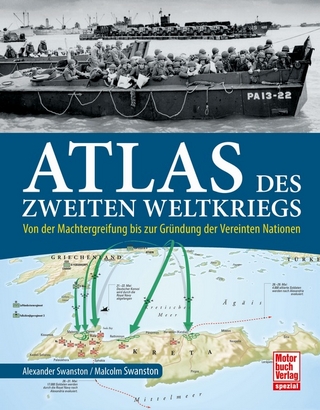
Big Guns
Artillery on the Battlefield
Seiten
2017
Casemate Publishers (Verlag)
978-1-61200-488-4 (ISBN)
Casemate Publishers (Verlag)
978-1-61200-488-4 (ISBN)
An accessible introduction to the development and use of artillery in war.
Over seven centuries the artillery piece has evolved from a status symbol to one of the most deadly weapons wielded by man. Using gunpowder weapons was initially something of a black art, but over the centuries gunnery became a science, a dependable method of breaching fortifications, or overcoming an enemy on the battlefield.
By the 19th century, most European armies had artillery units manned with trained gunners; Napoleon, originally an artillery officer, then took the use of artillery to a new level. Over the following decades, rapid advances in gun technology paved the way for the devastatingly powerful heavy artillery that literally transformed the landscape during World War I. The use of rolling and box barrages shaped how armies fought on the front lines and powerful naval guns dictated the outcome of battles at sea.
By World War II the range of artillery had expanded to include self-propelled guns, and powerful antitank and anti-aircraft guns. In this informative introduction, Angus Konstam concisely explains how the development and evolving deployment of artillery led to big guns becoming the key to victory in two world wars and a potent force on the modern battlefield.
Over seven centuries the artillery piece has evolved from a status symbol to one of the most deadly weapons wielded by man. Using gunpowder weapons was initially something of a black art, but over the centuries gunnery became a science, a dependable method of breaching fortifications, or overcoming an enemy on the battlefield.
By the 19th century, most European armies had artillery units manned with trained gunners; Napoleon, originally an artillery officer, then took the use of artillery to a new level. Over the following decades, rapid advances in gun technology paved the way for the devastatingly powerful heavy artillery that literally transformed the landscape during World War I. The use of rolling and box barrages shaped how armies fought on the front lines and powerful naval guns dictated the outcome of battles at sea.
By World War II the range of artillery had expanded to include self-propelled guns, and powerful antitank and anti-aircraft guns. In this informative introduction, Angus Konstam concisely explains how the development and evolving deployment of artillery led to big guns becoming the key to victory in two world wars and a potent force on the modern battlefield.
Angus Konstam is a respected military and naval historian, with numerous books to his credit. A former naval officer and Curator of Weapons at the Royal Armouries, he now works as a full-time author and historian, and is based in Edinburgh.
| Erscheinungsdatum | 28.09.2017 |
|---|---|
| Reihe/Serie | Casemate Short History |
| Sprache | englisch |
| Maße | 125 x 198 mm |
| Themenwelt | Natur / Technik ► Fahrzeuge / Flugzeuge / Schiffe ► Militärfahrzeuge / -flugzeuge / -schiffe |
| Geschichte ► Teilgebiete der Geschichte ► Militärgeschichte | |
| Sozialwissenschaften ► Politik / Verwaltung | |
| Technik | |
| ISBN-10 | 1-61200-488-1 / 1612004881 |
| ISBN-13 | 978-1-61200-488-4 / 9781612004884 |
| Zustand | Neuware |
| Haben Sie eine Frage zum Produkt? |
Mehr entdecken
aus dem Bereich
aus dem Bereich
von der Machtergreifung bis zur Gründung der Vereinten Nationen
Buch | Softcover (2023)
Motorbuch Verlag
24,90 €


